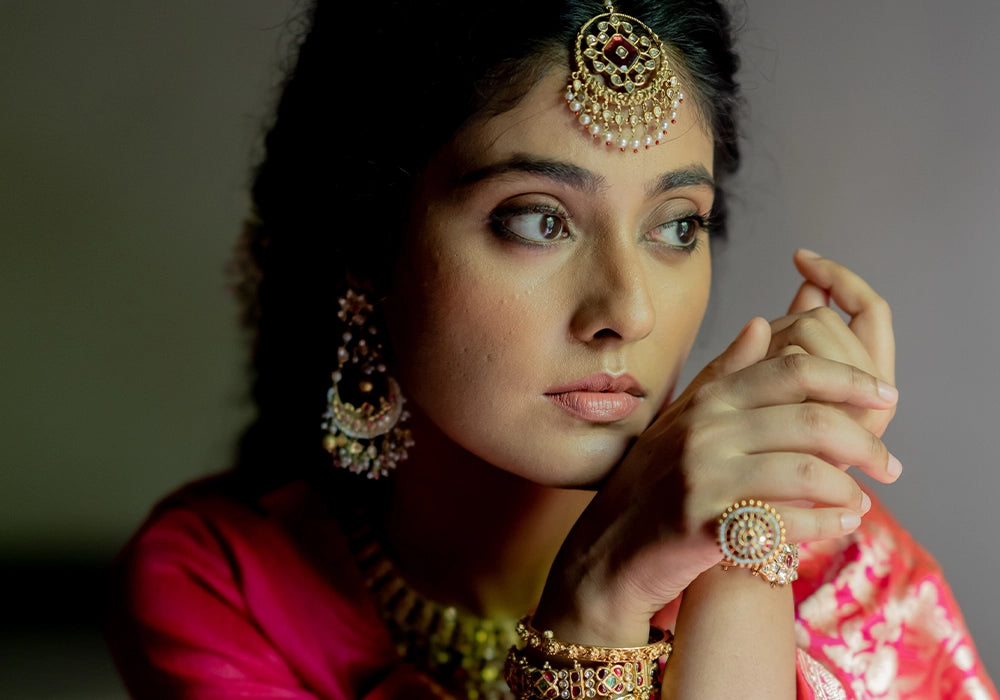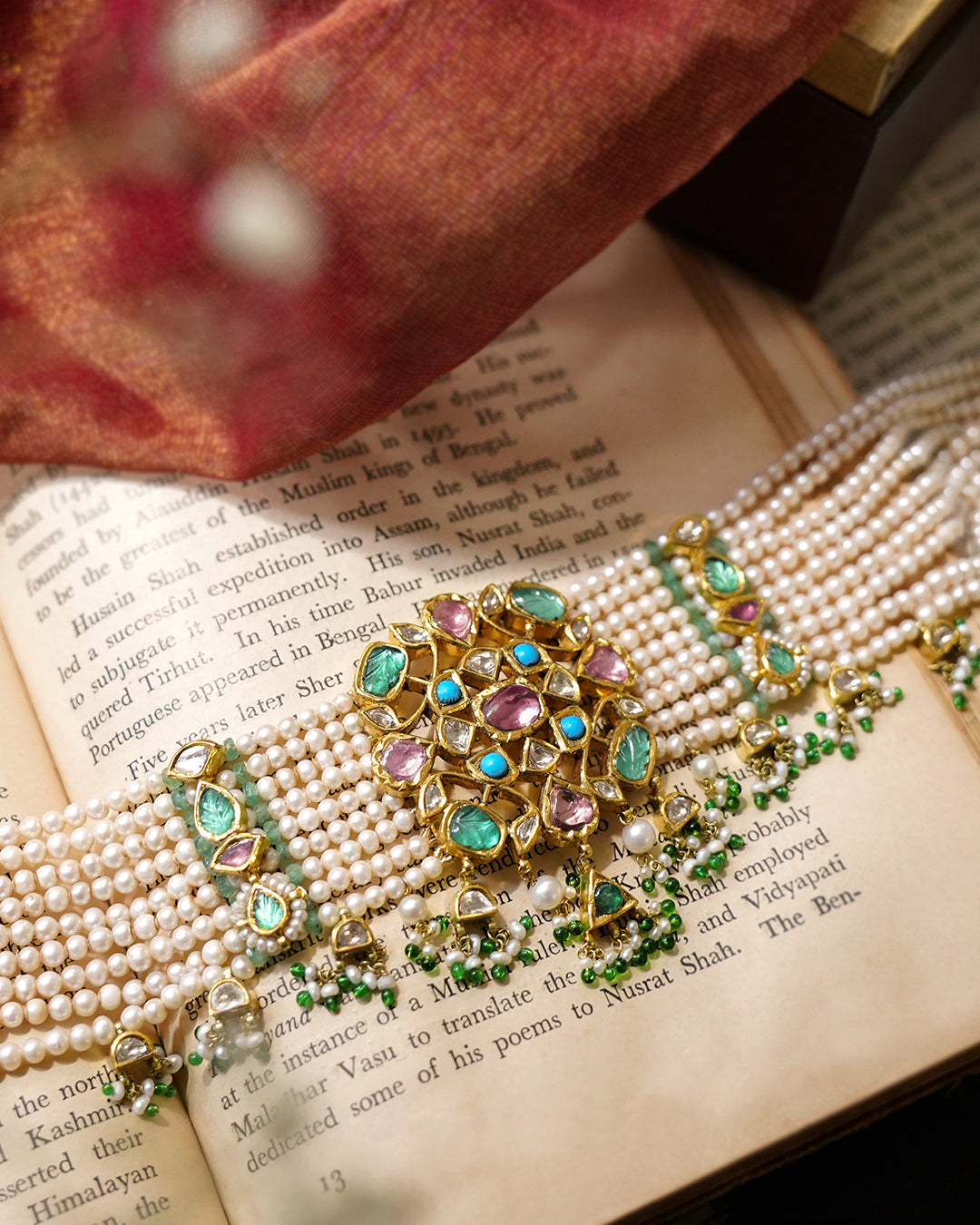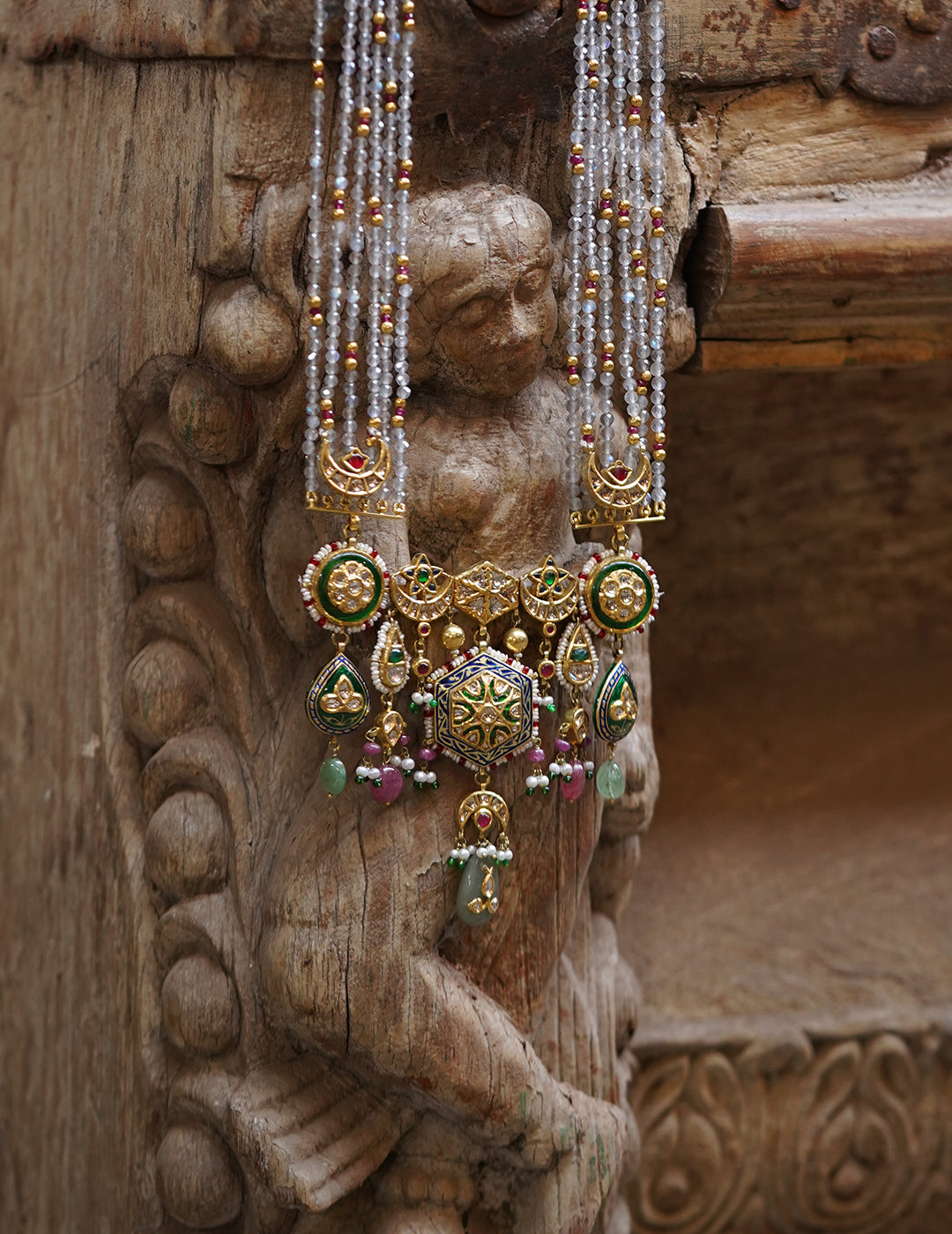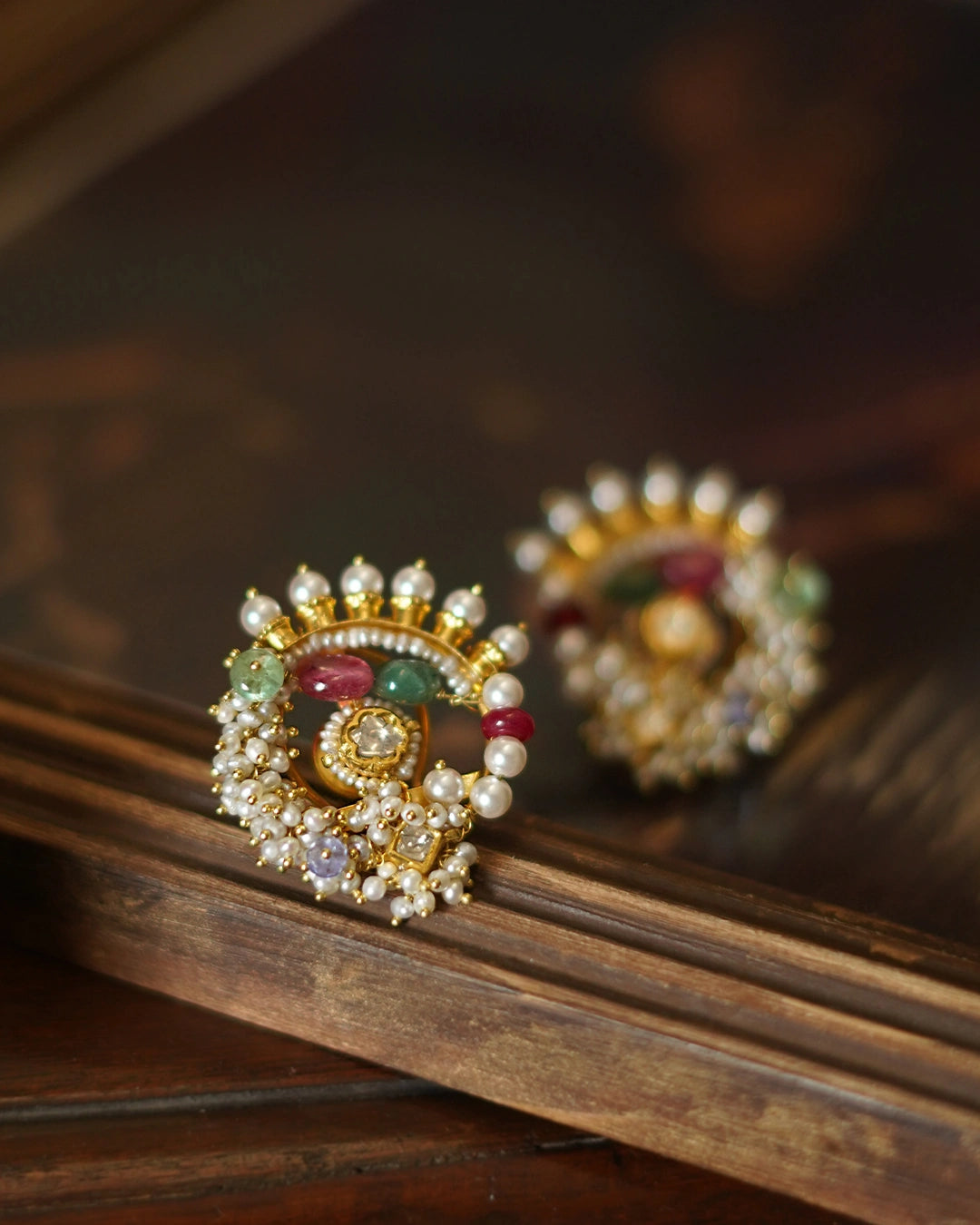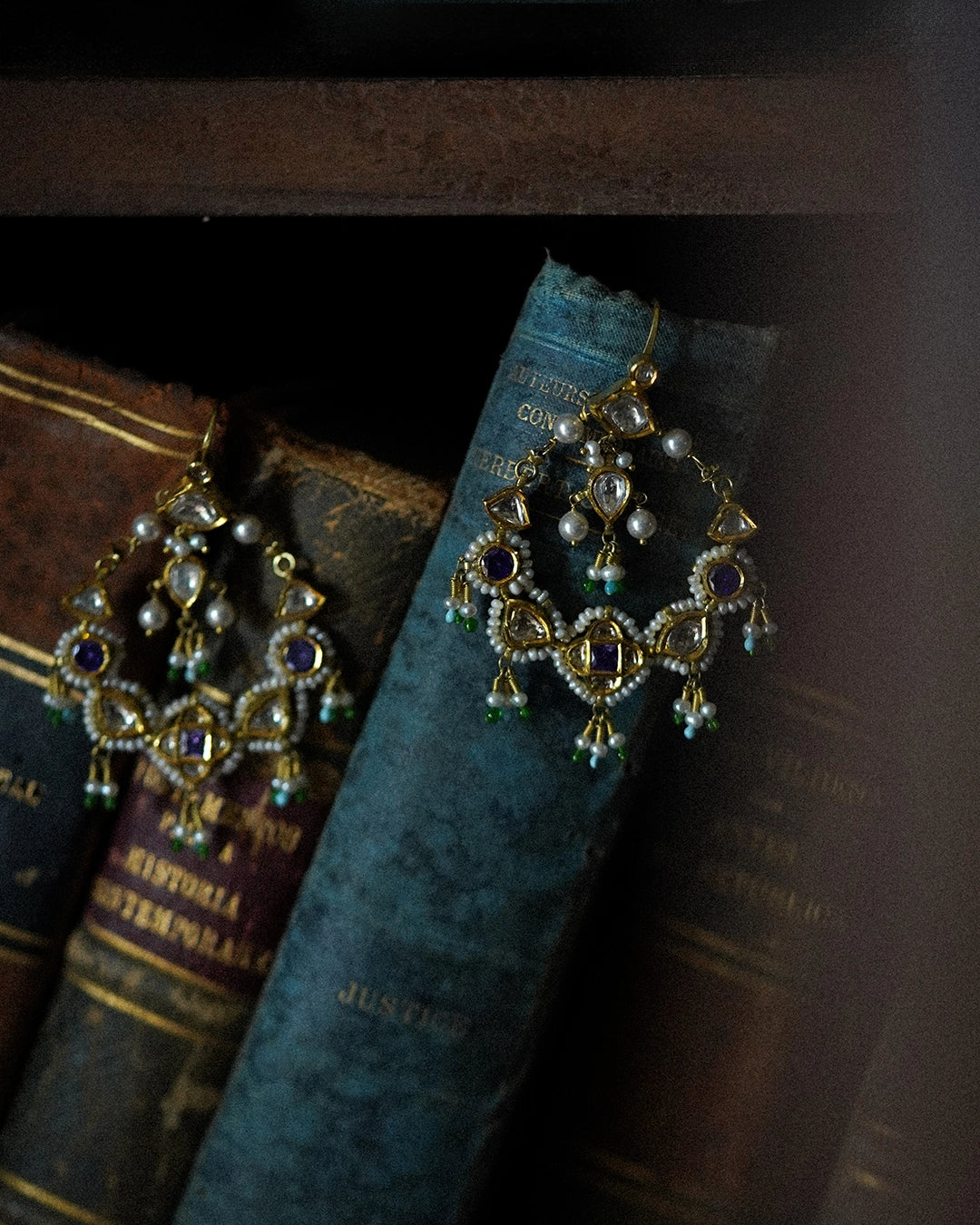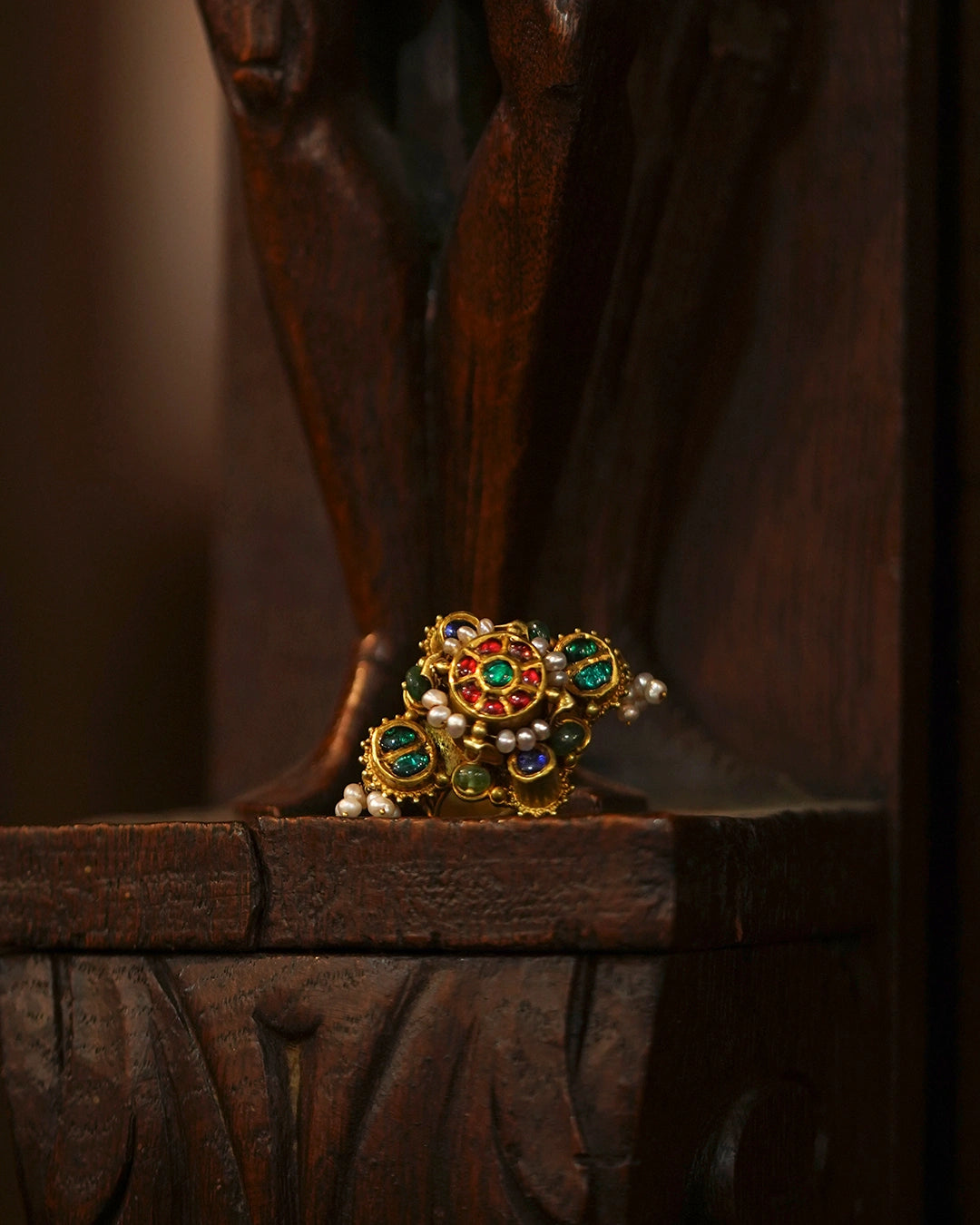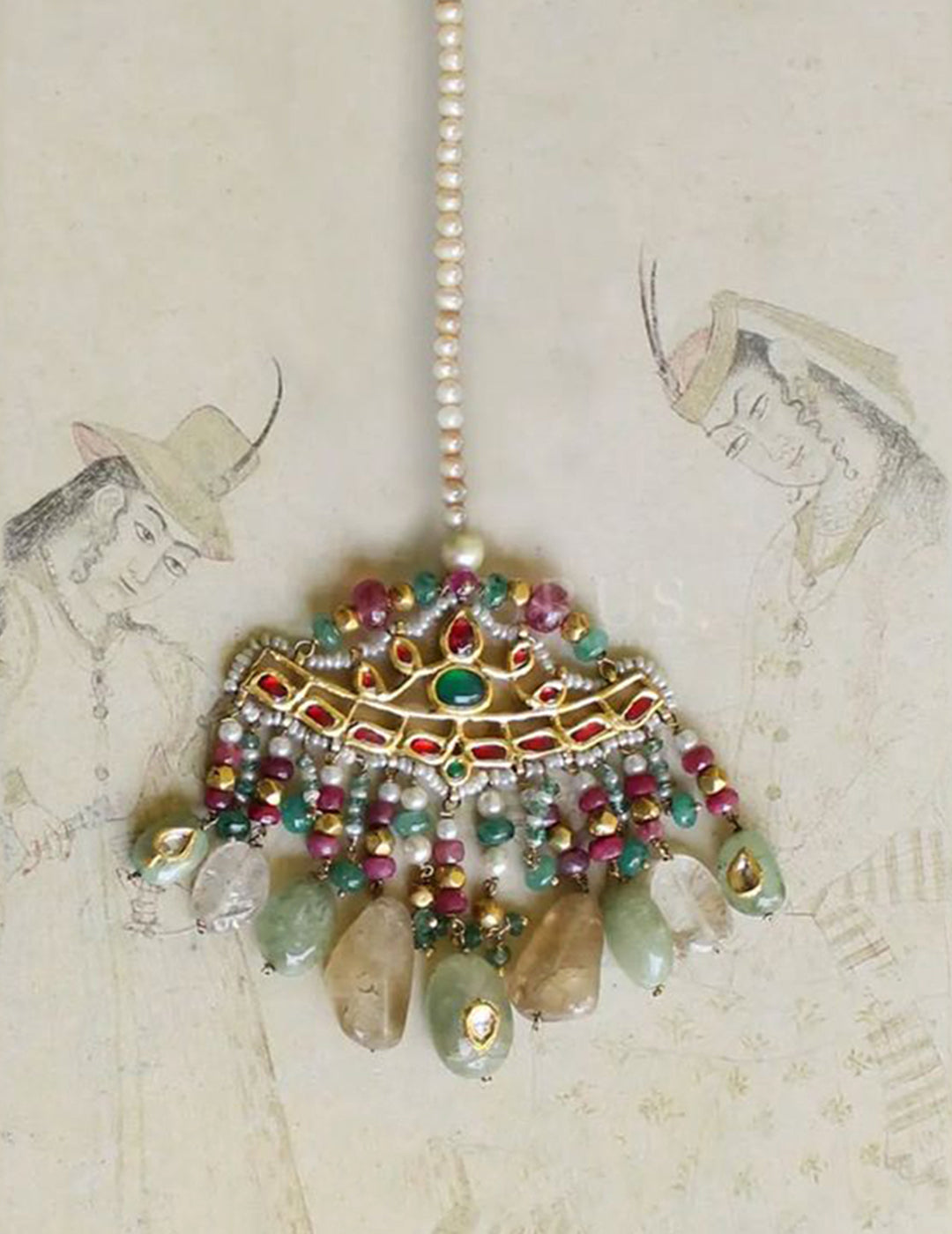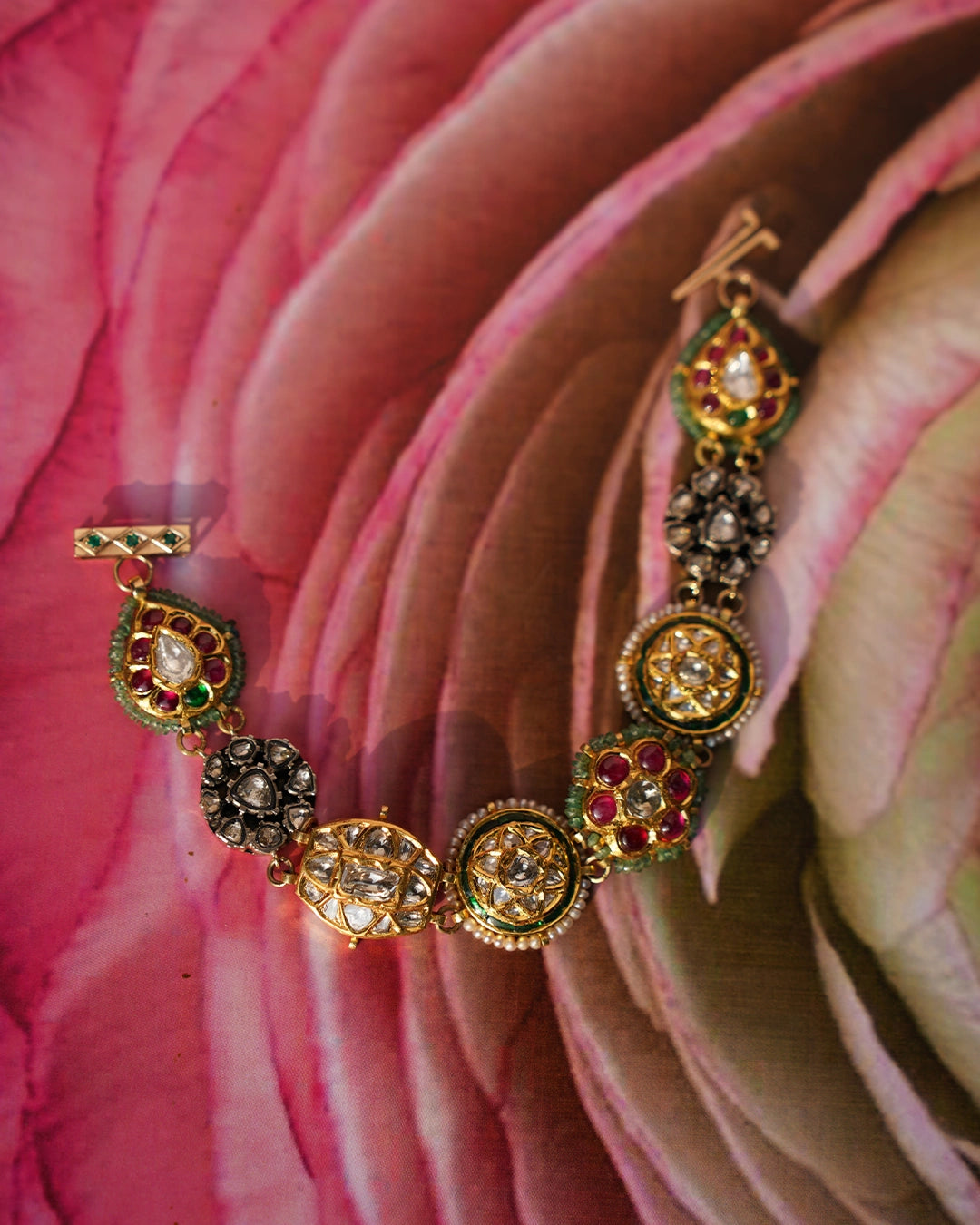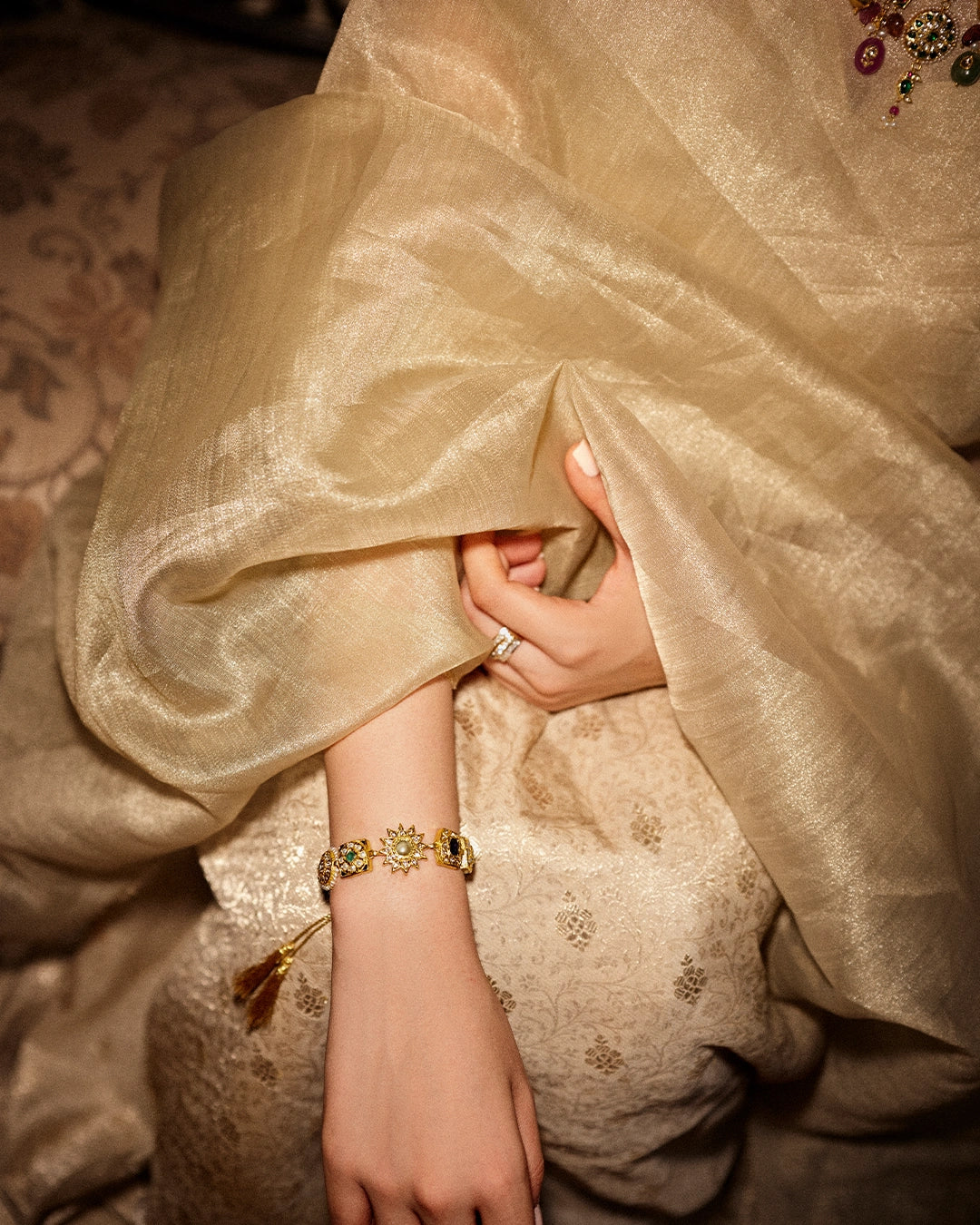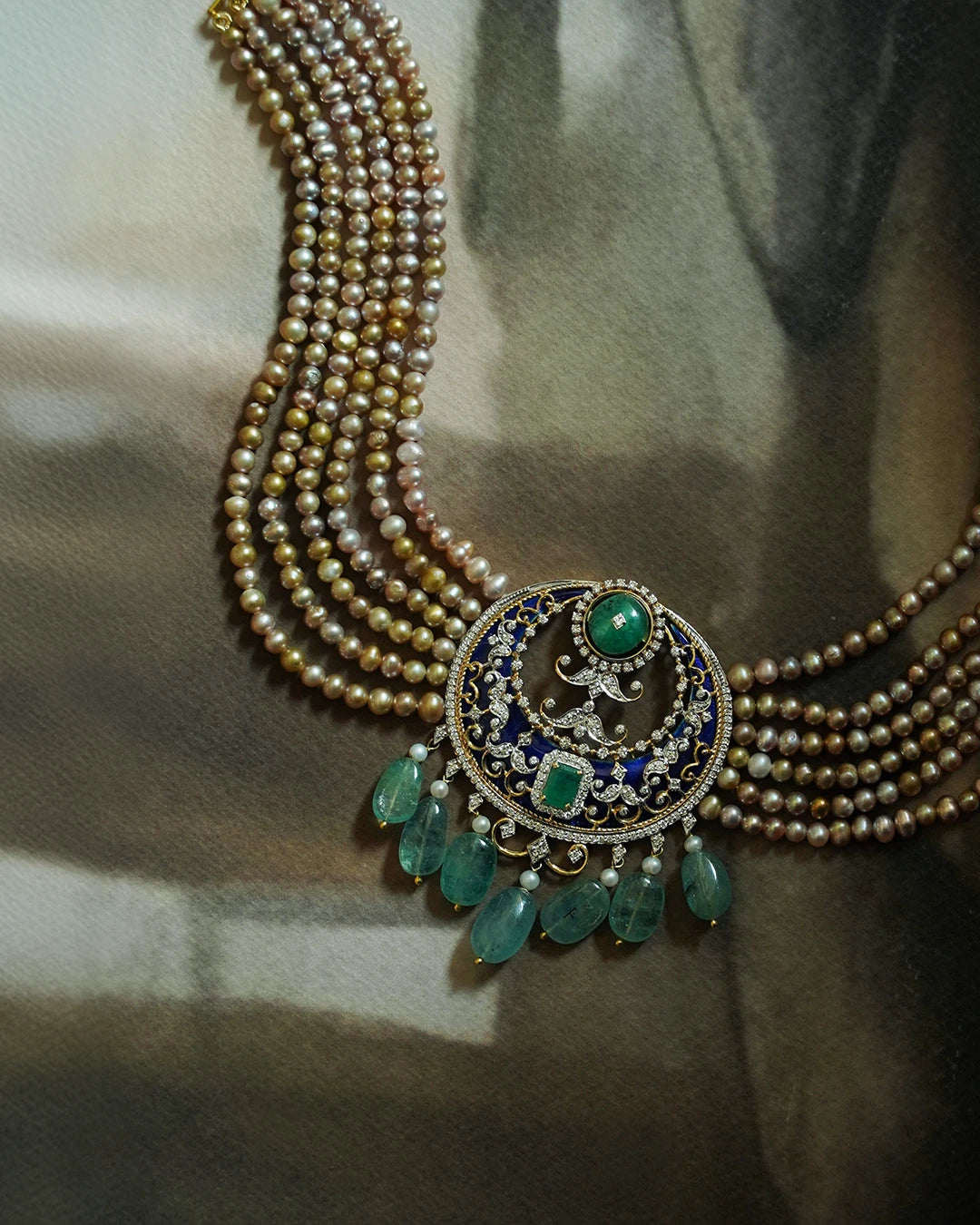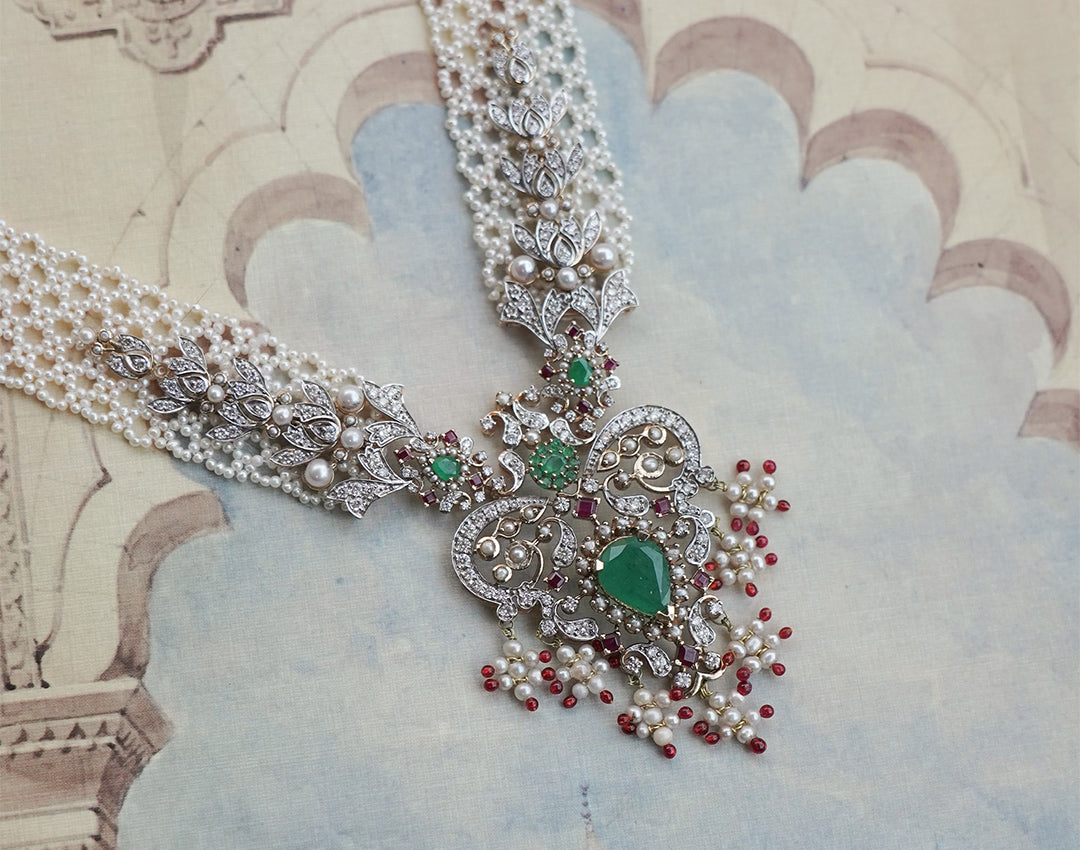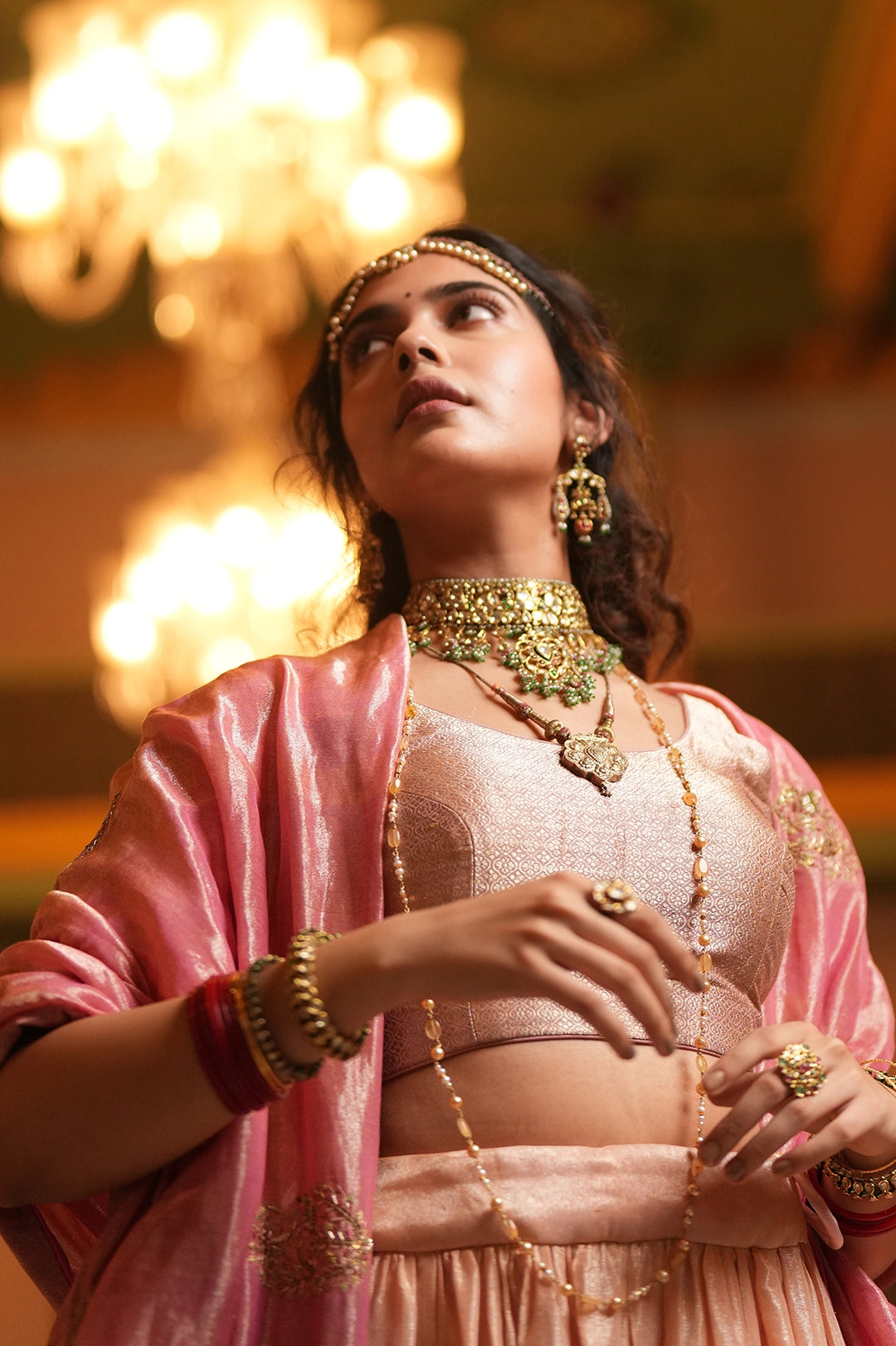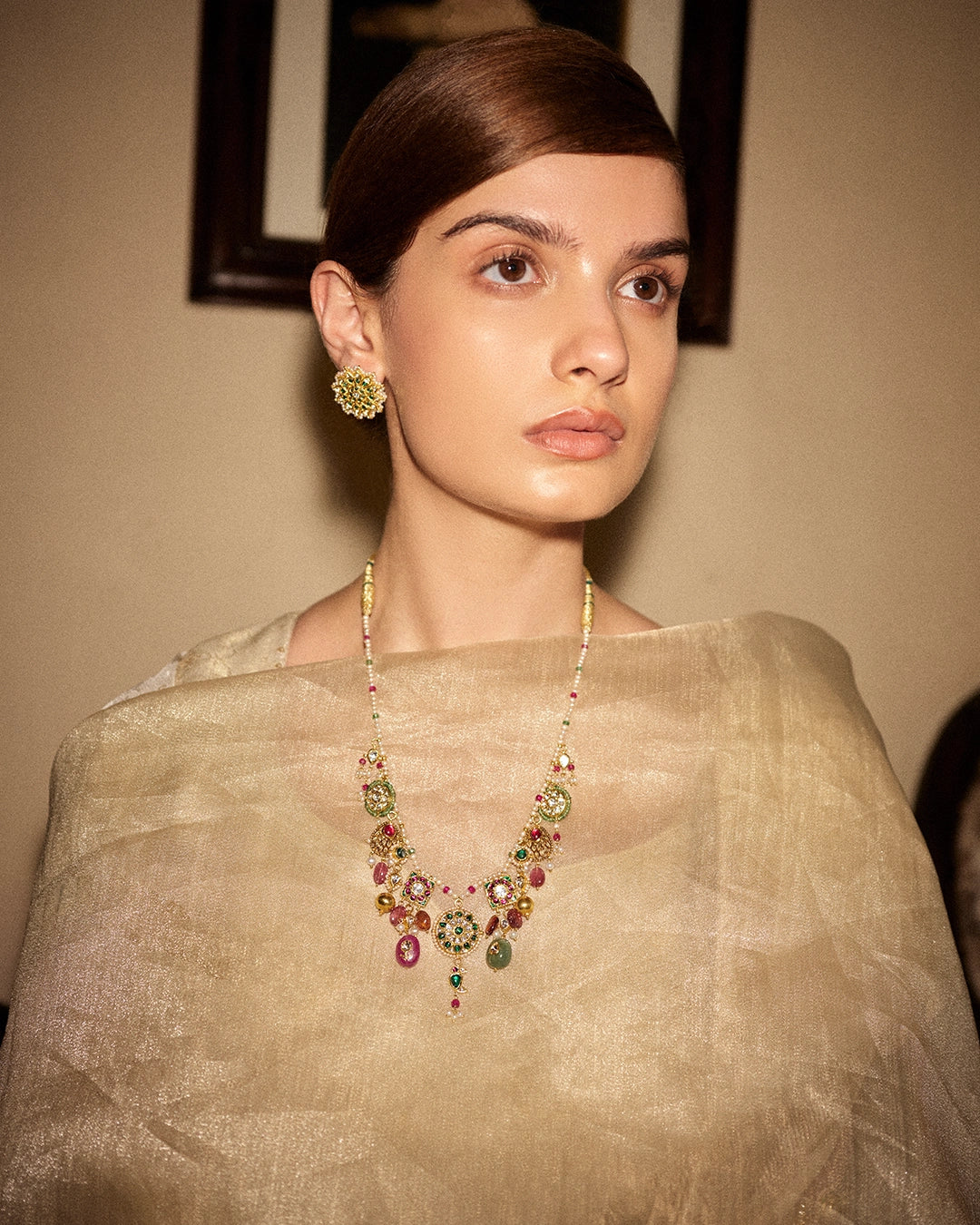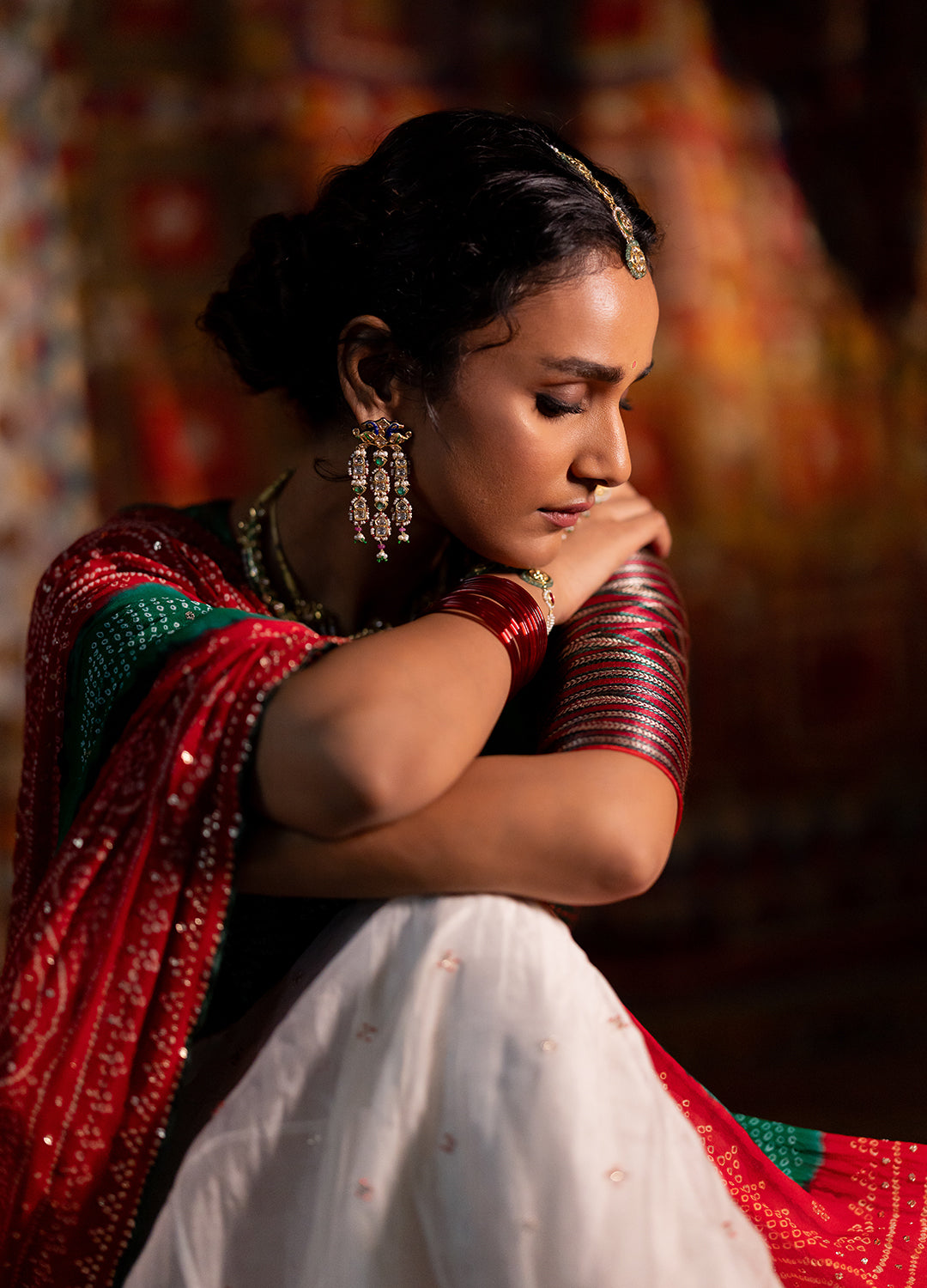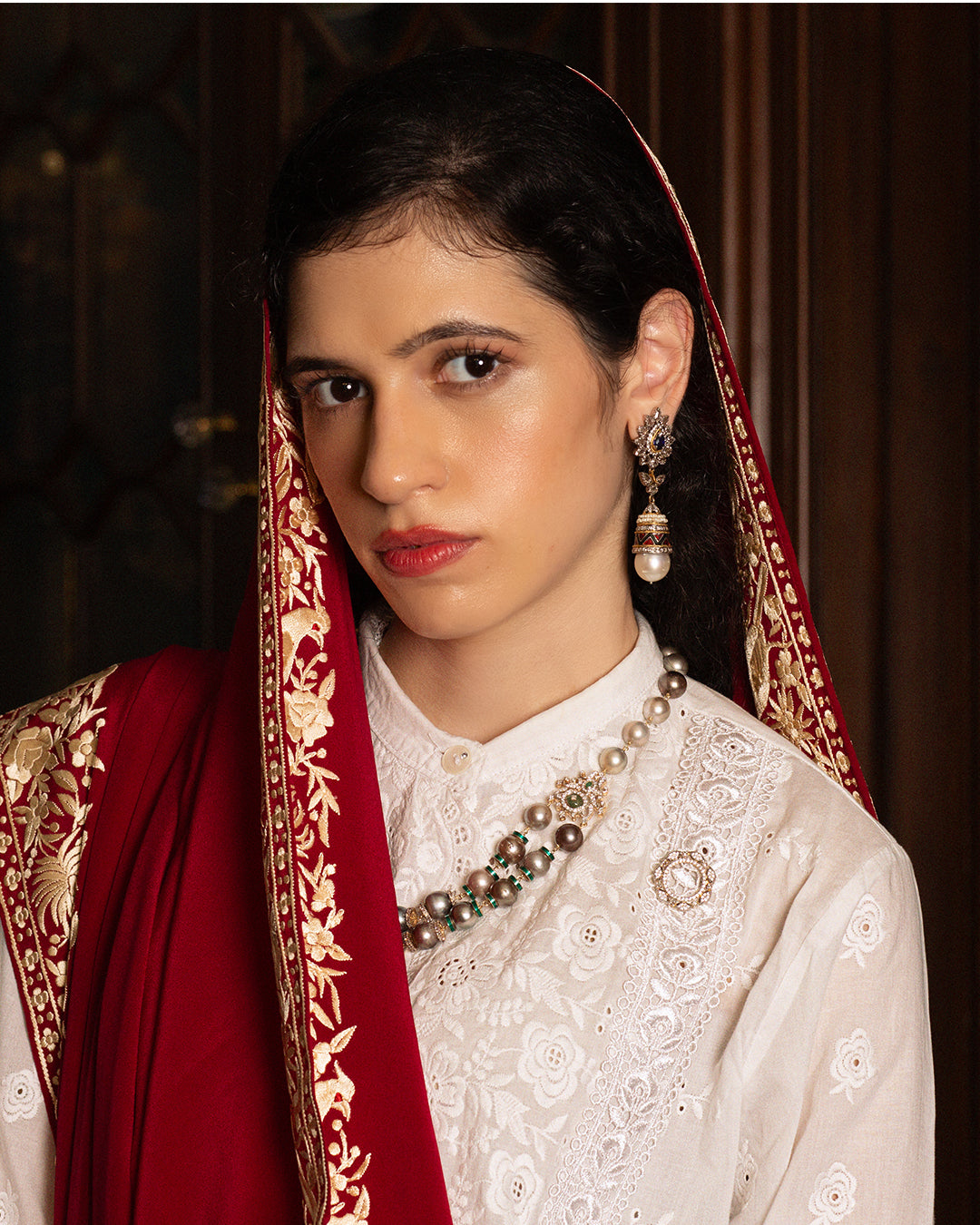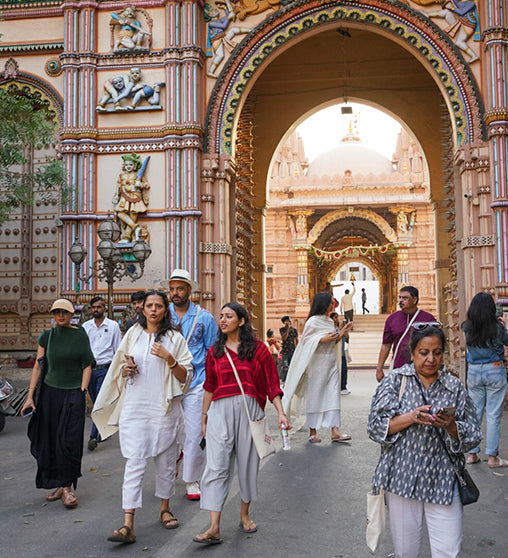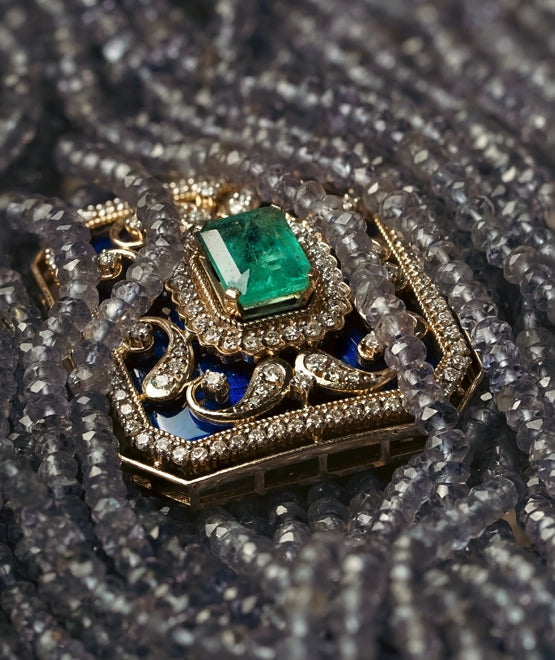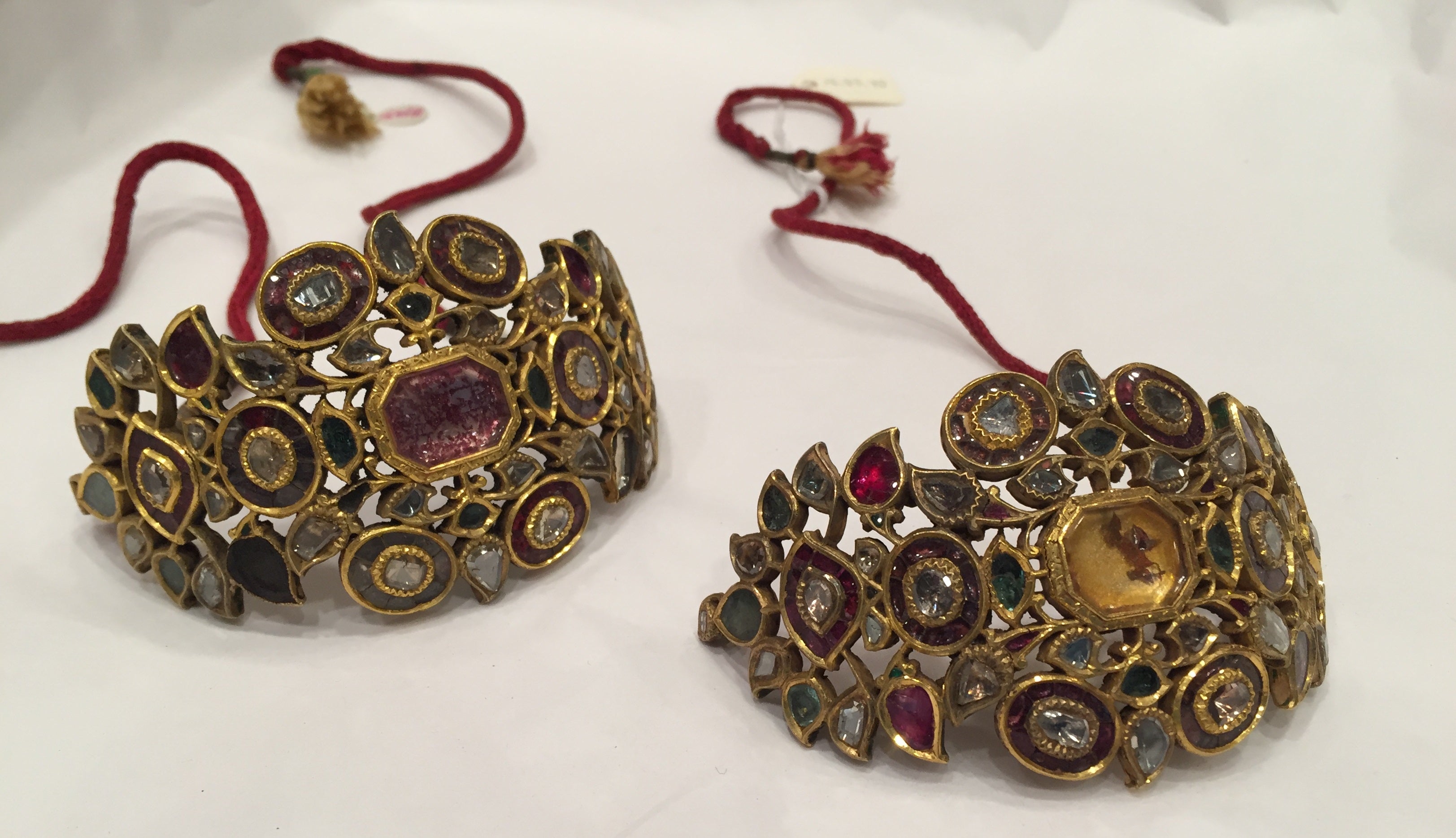Picture Aishwarya Rai Bachchan’s iconic looks as Jodha Bai from the much-loved epic drama Jodhaa Akbar—the first image that instantaneously comes to our minds is her decked in opulent gold jewelry from head to toe! We know this particular type of Indian gold jewelry as Kundan jewelry.

Image courtesy: Pinterest
Almost always the first choice of a bride as her wedding jewelry, rarely anybody does not know about Kundan jewelry. But not many know about its history. Today, that’s what we’re going to talk about. But first things first—what do you mean by Kundan?
According to one connotation, Kundan is the 24K gold that is drawn out in wires or strips that is used to fix gemstones in jewelry without heating the metal. The major benefit of Kundan setting is that it overcomes the need for forming a bezel or gemstone-setting frame to hold each gemstone, which is a time-consuming and difficult process, especially since this style of jewelry uses a large number of gemstones, often of individual, irregular shape, says Shimul Mehta Vyas in her book When Jewellery Speaks, in turn referring to Oppi Untracht’s book, Traditional Jewelry of India.
The Kundan jewelry technique is perhaps the oldest technique for setting stones in jewelry using gold in the Indian tradition, says Bernadette Van Gelder in her book Traditional Indian Jewelry—Beautiful People. According to the book, this technique was first mentioned in the Ain-i-Akbari, the third and last book of Akbarnama, the official account of Akbar's rule.

This amulet would have been the central pendant of a necklace and there is a hole along the top edge to accommodate the thread or chain. This example has very intricate details and the eyes of the birds are tiny emeralds set in gold. It is made with the 'kundan' technique of setting precious stones into jade and other materials with tiny strips of extremely highly refined gold. The back of the pendant is inscribed with a verse from the Koran. The very high quality of the gemstones and craftsmanship suggest that it was made within the Mughal court workshops, and the style of the palmettes date it to the early 17th century.
Source and image courtesy: Victoria and Albert Museum
The origin of the Kundan jewelry-making technique is said to date back to at least the third century BCE in India. The technique began in the royal court of Rajasthan and prospered under royal patronage during the Mughal era and has been one of the most popular techniques for making jewelry ever since. The fact that it is still practiced today and is the go-to jewelry type for brides is a testimony to the goldsmiths who have kept it alive.


This type of plait ornament, typically worn by brides and dancers, is called a jadanagam (hair serpent) for the grouping of snakes that may once have been attached to its topmost disk. This disk and the crescent shape below represent the sun and the moon. Decorated in the kundan technique in which hundreds of rubies, emeralds, amethysts, and pieces of rock crystal were inset into malleable gold foil and made flush with the surface of the ornament, the entire object would have sparkled with the movement of its wearer. In Hindu tradition, a woman’s braid was associated with Triveni Sangam, the sacred confluence of three rivers – the Ganges, the Yamuna, and the mythic Saraswati.
Source and Image courtesy: The Met Museum
Featured image:
Bazubands, worn on the upper bicep, were an important element in a suite of jewelry worn by men. This object and its mate (15.95.40) have been fabricated from gold and a number of gemstones which have been set in Kundan style and foiled on the backside. Using foil on the underside of a set stone was a common technique that enhanced the color of the jewel, but can deteriorate over time, as in here. The verso of this pair has been beautifully enameled in white, red, green, and gold—a traditional palette from Jaipur.
Source and image courtesy: The Met Museum
